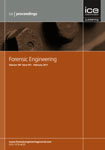
Proceedings of the Institution of Civil Engineers-Forensic Engineering
Scope & Guideline
Transforming Insights into Engineering Excellence
Introduction
Aims and Scopes
- Forensic Analysis of Structural Failures:
The journal focuses on the investigation of structural failures, providing insights into causes, consequences, and methodologies for failure analysis. - Sustainable Engineering Practices:
Research on sustainable materials, techniques, and practices in civil engineering, emphasizing the importance of environmental considerations in engineering solutions. - Innovative Technologies in Engineering:
Exploration of cutting-edge technologies, such as wearable tech and advanced simulation methods, to improve safety and performance in civil engineering. - Risk Assessment and Management:
Emphasis on the assessment and management of risks associated with construction and civil engineering projects, including safety violations and operational risks. - Case Studies and Real-World Applications:
In-depth case studies that provide practical insights into specific civil engineering challenges, highlighting the application of theoretical knowledge in real-world scenarios.
Trending and Emerging
- Climate Resilience in Engineering:
An increasing focus on how climate change impacts structural safety and longevity, highlighting the need for engineers to consider environmental factors in their designs. - Reuse and Rehabilitation of Existing Structures:
Growing interest in the reuse of existing foundations and structures as a sustainable practice, aligning with global trends towards resource efficiency. - Technological Integration in Construction:
The use of wearable technologies and advanced monitoring systems to enhance worker safety and operational efficiency is gaining traction. - Performance-Based Design Approaches:
A shift towards performance-based design methodologies that emphasize the actual performance of structures under varied conditions rather than traditional code-based approaches. - Sustainable Material Innovations:
Research on the use of waste materials and sustainable alternatives in construction reflects a significant trend towards environmentally friendly engineering practices.
Declining or Waning
- Traditional Construction Materials:
Research on conventional construction materials has become less prominent, possibly due to a shift towards sustainable alternatives and innovative materials. - Basic Structural Analysis Techniques:
There has been a noticeable decrease in publications focused on basic structural analysis, as the field moves towards more advanced computational methods and simulations. - Generalized Safety Protocols:
The focus on generalized or outdated safety protocols has waned, with more emphasis now being placed on specific, context-driven safety measures. - Historical Case Studies:
While historical analyses were once a staple, there seems to be a decreasing trend in publications focusing solely on historical case studies without contemporary relevance. - Generic Risk Management Strategies:
There is a decline in research centered on generic risk management strategies, as the field increasingly values tailored approaches that consider the specificities of each project.
Similar Journals
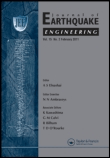
JOURNAL OF EARTHQUAKE ENGINEERING
Leading the way in earthquake resilience and safety.JOURNAL OF EARTHQUAKE ENGINEERING, published by TAYLOR & FRANCIS LTD, stands as a pivotal resource in the fields of Building and Construction, Civil and Structural Engineering, and Geotechnical Engineering. With an impressive Q1 ranking in multiple categories for 2023, this journal is instrumental for researchers, professionals, and students committed to advancing knowledge in earthquake engineering and its practical applications. As a platform that spans the years from 1997 to 2024, it highlights significant contributions to safety, risk, reliability, and quality in engineering practices. While the journal operates on a subscription basis, its highly regarded articles, bolstered by robust Scopus rankings—such as rank #46 in Building and Construction—underscore its credibility and influence in shaping standards and methodologies within the discipline. Promoting innovative and evidence-based approaches, the JOURNAL OF EARTHQUAKE ENGINEERING is essential reading for anyone engaged in the science and technology of earthquake-resistant structures.
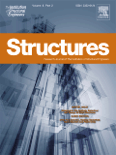
Structures
Pioneering Research for Safer, Smarter StructuresStructures is a premier interdisciplinary journal published by Elsevier Science Inc, dedicated to advancing the fields of architecture, building and construction, civil and structural engineering, and safety, risk, reliability, and quality. With its ISSN 2352-0124, this scholarly journal showcases cutting-edge research and innovative practices that drive the evolution of structural design and analysis. Since its establishment in 2015, Structures has swiftly garnered high esteem, achieving a Q1 ranking in four key categories as of 2023, and placing within the top percentiles in various engineering disciplines, making it an essential resource for industry professionals, researchers, and students alike. The journal promotes a comprehensive understanding of contemporary challenges and solutions within its scope, providing a platform for disseminating impactful research. Access options may vary, but the commitment to high-quality, peer-reviewed content remains a constant in fostering academic growth and industry advancement.
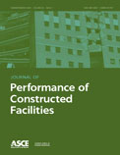
JOURNAL OF PERFORMANCE OF CONSTRUCTED FACILITIES
Unveiling the Future of Constructed Facility ExcellenceJOURNAL OF PERFORMANCE OF CONSTRUCTED FACILITIES, published by the ASCE-AMERICAN SOCIETY OF CIVIL ENGINEERS, is a leading peer-reviewed journal dedicated to the field of civil engineering with a strong emphasis on the performance assessment and sustainability of constructed facilities. Established in 1987 and converging through 2024, this journal has garnered a solid reputation with an impressive Q2 quartile ranking across key areas including Building and Construction, Civil and Structural Engineering, and Safety, Risk, Reliability and Quality. The journal's Scopus rankings further underline its significance, being positioned within the top percentiles of these domains. As it aims to publish innovative research, case studies, and reviews, the journal serves as a vital resource for professionals and academics who are keen on advancing their understanding of the complexities associated with the performance and reliability of civil infrastructure. Researchers and practitioners interested in the latest advancements in construction performance can greatly benefit from the insights and findings published in this esteemed journal.
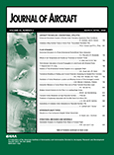
JOURNAL OF AIRCRAFT
Unraveling the Science of Flight.JOURNAL OF AIRCRAFT, published by the American Institute of Aeronautics and Astronautics, stands at the forefront of aerospace engineering research, serving as a critical resource for researchers, professionals, and students in the field. With a proud publication history dating back to 1964 and continuing through 2024, the journal has established itself as a leading forum for innovative studies and advancements in aircraft design, technology, and utilization. Notably, it holds a prestigious Q1 ranking in Aerospace Engineering and is positioned at the 75th percentile among its peers. As a non-open access publication, it offers a subscription-based model, ensuring high-quality content disseminated to a discerning audience. The ISSN 0021-8669 and E-ISSN 1533-3868 provide easy reference for those seeking to engage with pioneering research in aviation and aircraft systems. Researchers and practitioners alike will find valuable insights and comprehensive analyses in this esteemed journal that continually shapes the development of the aerospace industry.
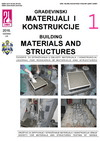
Gradevnski Materijiali I Konstrukcije-Building Materials and Structures
Innovating materials, building a resilient tomorrow.Gradevnski Materijiali I Konstrukcije - Building Materials and Structures is a premier open-access journal dedicated to advancing the field of construction materials and structural engineering. Published by SOC MATERIALS & STRUCTURES TESTING SERBIA, this journal provides a platform for researchers, professionals, and students to share their innovative findings and developments in building materials. With a commitment to open-access since 2012, it fosters unrestricted availability of research for a wider audience, encouraging collaboration and knowledge dissemination. The journal features a diverse range of topics, including material testing, structural integrity, and sustainable construction practices, making it a vital resource for those engaged in the design and analysis of structural components. By fostering the advancement of research and practice in this crucial sector, Gradevnski Materijiali I Konstrukcije plays an essential role in shaping the future of construction and material science.
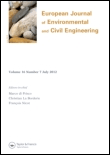
European Journal of Environmental and Civil Engineering
Innovating Engineering Practices for a Greener TomorrowThe European Journal of Environmental and Civil Engineering, published by Taylor & Francis Ltd, is a prestigious peer-reviewed journal that serves as a vital platform for advancing knowledge in the fields of Civil and Structural Engineering as well as Environmental Engineering. With an impressive impact factor and categorized in the Q2 quartile for both engineering fields, this journal occupies a significant position in the scholarly community. Its focused scope encompasses innovative research, case studies, and practical applications that address contemporary environmental and infrastructural challenges. Researchers, professionals, and students alike benefit from the journal's commitment to high-quality discourse, as evidenced by its Scopus rankings, which place it in the top 30% in Civil and Structural Engineering and the top 40% in Environmental Engineering. Through the publication of cutting-edge studies and a commitment to fostering interdisciplinary dialogue, the European Journal of Environmental and Civil Engineering remains an essential resource for those dedicated to improving our built environment and safeguarding our natural resources.

Civil Engineering Journal-Stavebni Obzor
Fostering Collaboration for a Sustainable FutureWelcome to the Civil Engineering Journal-Stavebni Obzor, an esteemed academic publication dedicated to advancing the field of civil engineering. Published by the Czech Technical University in Prague, Faculty of Civil Engineering, this journal has provided a platform for innovative research and critical discourse since its inception. With an ISSN of 1210-4027 and an E-ISSN of 1805-2576, this Open Access journal has been facilitating wide dissemination of knowledge in civil engineering since 2014, ensuring that valuable research reaches a global audience without barriers. The journal is committed to fostering collaboration among researchers, professionals, and students, encouraging the exchange of ideas that drive the discipline forward. Its diverse scope encompasses various aspects of civil engineering, making it an essential resource for anyone looking to stay at the forefront of this dynamic field. Located in Prague, a hub of engineering excellence, this journal not only reflects the latest trends and innovations but also contributes to shaping the future of civil engineering.

Structural Engineering International
Empowering engineers through rigorous research and case studies.Structural Engineering International, published by TAYLOR & FRANCIS LTD, is an esteemed journal dedicated to advancing the field of structural engineering since its inception in 1996. With an ISSN of 1016-8664 and an E-ISSN of 1683-0350, it caters to a global audience of researchers, professionals, and students interested in both theoretical and practical aspects of the discipline. The journal operates without Open Access, ensuring rigorous peer review and high academic standards. Ranked in the Q3 category for both Building and Construction and Civil and Structural Engineering (2023), it holds a significant position within its field, as evidenced by its Scopus rankings. The aim of the journal is to disseminate innovative research, case studies, and developments in structural engineering that can influence real-world practices and enrich educational content. With a commitment to supporting the ongoing discourse in structural engineering, Structural Engineering International remains a vital resource for enhancing knowledge and fostering collaboration among industry experts and academic scholars.
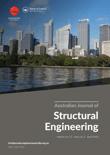
Australian Journal of Structural Engineering
Fostering Collaboration for Tomorrow's Engineering SolutionsThe Australian Journal of Structural Engineering (ISSN: 1328-7982, E-ISSN: 2204-2261), published by TAYLOR & FRANCIS AS, serves as a pivotal platform for disseminating high-quality research in the fields of civil and structural engineering, mechanical engineering, and mechanics of materials. With a publications timeline from 2008 to 2024, this journal plays a crucial role in advancing knowledge and practice within its disciplines, boasting Q3 rankings across various categories as of 2023. Although it operates under a subscription model, the journal remains accessible to a diverse audience, including researchers, professionals, and students, seeking to enrich their understanding and engagement with contemporary engineering challenges. The Australian Journal of Structural Engineering is not only a repository of innovative ideas but also a vital resource for fostering collaboration and sparking discussion among scholars and practitioners striving for excellence in engineering design and analysis.
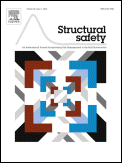
STRUCTURAL SAFETY
Elevating standards in safety and risk management.STRUCTURAL SAFETY is a premier journal dedicated to advancing the field of engineering with a focus on safety, risk, reliability, and quality in structural analysis and design. Published by Elsevier, this esteemed journal boasts an impressive Impact Factor and ranks in the top quartiles (Q1) of key categories including Building and Construction, Civil and Structural Engineering, and Safety, Risk, Reliability, and Quality. With a significant history spanning from 1982 to 2024, STRUCTURAL SAFETY fosters scholarly exchange among researchers, professionals, and students by publishing innovative and high-quality research articles that contribute to the safety and resilience of engineered structures. The journal operates without open access barriers, ensuring a broad audience can access invaluable insights in the engineering realm. Its distinguished Scopus rankings further underscore its impactful role within the academic community, making it an essential resource for anyone invested in the discipline of structural safety.